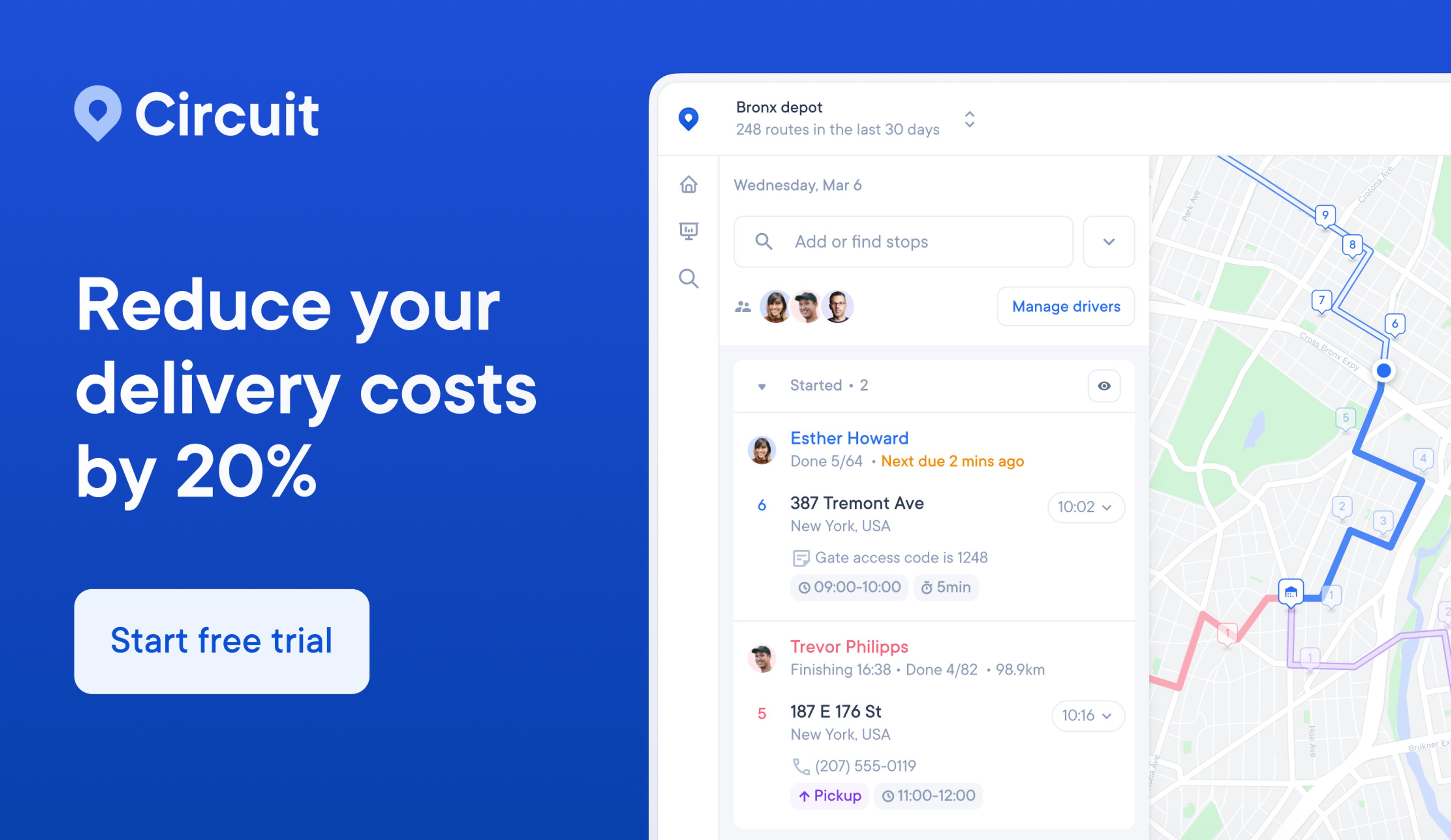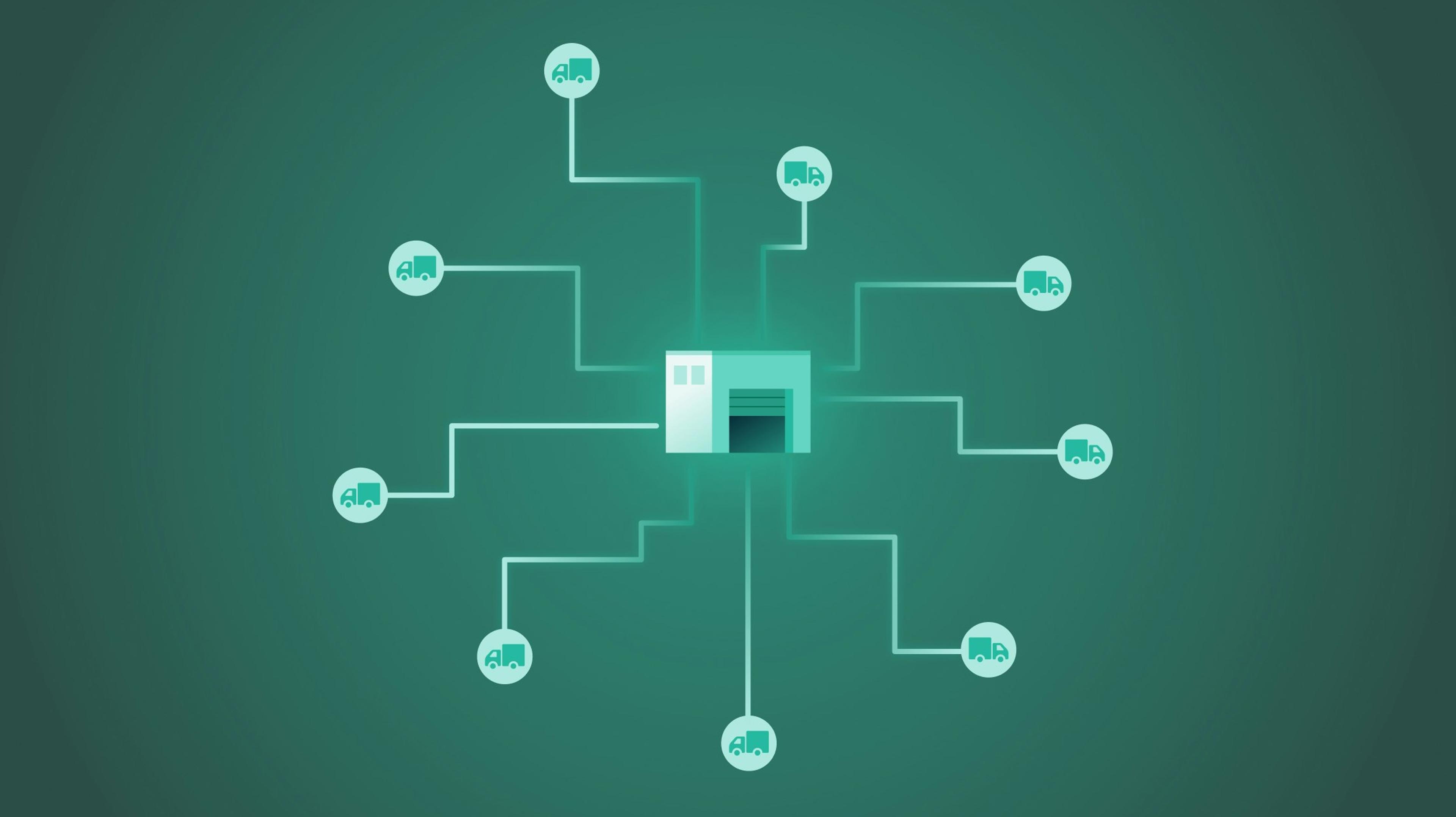Backward vs. Forward Scheduling: Key Differences, Pros, and Cons

Manage your delivery drivers and schedules seamlessly with the help of Circuit for Teams.
In a nutshell, backward scheduling means you work backward from a desired completion date (usually specified by the customer).
Using that date as a guide, you note how long each production stage will take and calculate the earliest possible start date to commence production.
In forward scheduling, you work from the start date (or the time when you get the production order).
In this project scheduling system, you plan your project moving forward from that start date and start production immediately.
But these are just broad strokes.
In this article, we’ll dig further into these two scheduling systems and explain what to consider when choosing the best scheduling system for your business.
Key takeaways:
- Forward scheduling starts from the date you get the order, at which point you immediately start production. Backward scheduling works back from the desired delivery date and schedule production so the order is delivered right on time.
- Forward scheduling makes sure there is very little downtime in your manufacturing schedule. This full schedule can sometimes lead to resource-related bottleneck issues.
- Backward scheduling gives you more flexibility in your manufacturing schedule overall but allows no room for error with individual project timelines.
- When deciding between these two strategies, manufacturers should consider customer expectations and whether they have the means to store products before delivery.

What is backward scheduling?
Backward scheduling — sometimes called reverse scheduling or just-in-time (JIT) manufacturing — is when you determine the final receipt date for a project and work back from that date.
Once you have your project due date (usually a deadline set by your customer), you figure out how long each project phase will take and count backward.
Once you’ve calculated each phase, you’ll know when to start your project so it’s ready by the completion date.
Let’s look at an example that illustrates how this scheduling method works.
Let’s say a manufacturing company gets an order for an item that is due to arrive in six days. You know it will take one day to deliver the item and three days to manufacture and assemble it.
That means your lead time for the project is four days and you must commence work on the item on day two — and not a moment sooner.
There are many moving parts when considering this system. That’s why many recommend using software like materials requirements planning (MRP) or enterprise resource planning (ERP) to plan more efficiently.
Such software helps manufacturing companies efficiently plan out their projects. The algorithm seamlessly uses such factors as the resources needed and availability of resources to schedule projects and make sure they meet necessary deadlines.
Pros and cons of backward scheduling
There are both advantages and disadvantages of this backward scheduling system.
Let’s first break down the biggest advantages of backward scheduling.
- Less cost. Items are made to order, so there is very little waste. And you don’t have to deal with pesky carrying costs because you don’t have to store items (remember, they ship immediately).
- More flexibility. In manufacturing, you might get a high-priority order or a request for a shorter delivery time. With this scheduling strategy, you can make adjustments and accommodate those orders more easily.
- Lower risk. Because you plan out your materials and resource usage in advance, you run into less risk of materials shortages.
Now let’s look at the biggest disadvantages of this system.
- No time cushion. Despite your best efforts, you have very little wiggle room in your schedule if problems arise during any step of your process.
- Difficult to fulfill unexpected orders. This scheduling method can make fulfilling an unexpectedly high influx of orders difficult.
What is forward scheduling?
Forward scheduling involves calculating the time needed to fulfill an order from the moment you get it.
This scheduling process involves manufacturing an item as soon as you get the order — no matter the delivery date.
For example, let’s say you get an order for an item that is to be delivered in ten days. It takes five days to produce the item.
In the forward scheduling process, you would begin production right away, and your item would be ready five days before you are due to ship it.
Great, right?
Not so fast …
This can bring up storage concerns, including the cost of storing the items that are ready too early. And these costs — not to mention the extra work involved — can add up quickly. We will talk about this issue in more depth further on.
Pros and cons of forward scheduling
This production process has both upsides and downsides to consider.
First, let’s look at the benefits of forward scheduling.
- Maximizing your workforce. In this strategy, your team works on customer orders as soon as they get them. This means you can organize your workflow to give you the maximum output and fulfill orders quicker.
- Minimizing downtime. Because you’re working on each order as it comes in, you can easily shift resources to accommodate it. This decreases downtime and maximizes productivity.
- Finishing early. When you start manufacturing as soon as production orders come in, you’re more likely to complete your orders ahead of time — decreasing chances of interference with your deadline.
Now, for the downsides to forward scheduling.
- Longer lead times. Running at capacity means you don’t have much room to increase workflow if you experience an increase in orders. This leads to a longer wait time for your customers.
- Running out of resources. Using materials as soon as you get orders can cause material shortages and delay your manufacturing process.
- Increased chance of bottlenecks. Since you’re constantly working to fill orders, new orders and last-minute changes can create a bottleneck as you wait for materials and resources to become available.
Of course, with Circuit for Teams, you can scratch delivery scheduling off your list of concerns.
Our route optimization software allows you to plan your deliveries well in advance so you can meet your forward-scheduling delivery dates more efficiently.

Backward vs. forward scheduling: Key differences
Here’s an overview of the differences between each scheduling strategy.
- Methodology. Forward scheduling works from the date you get the order and starts manufacturing as soon as possible. Backward scheduling works from the desired delivery date and estimates a schedule to finish the order so you don’t waste any time.
- Due dates. Because backward scheduling counts back from a receipt or due date, this method works best when you have customers who need to know when to expect their item. Forward scheduling can’t always guarantee this. Circuit for Teams can help in this area, making it possible for you to optimize delivery routes and meet delivery deadlines on time.
- Inventory costs. With backward scheduling, you won’t need to worry about storing inventory for future delivery — each product goes out as soon as you complete it. With forward scheduling, though, you will most likely need to find a place to store items until delivery.
Considering these differences and other factors, which of these strategies is right for your business?
Is backward or forward scheduling better for your business?
People asking this question often want a definite answer — “Such-and-such is a way better option.”
But we just can’t do that here.
Both of these scheduling strategies work well, just in different ways.
The question is not which of these scheduling approaches is best — rather, it’s which is best for you.
Generally, make-to-stock manufacturers use forward scheduling. This allows them to have regular stock on hand for when customers submit orders.
On the other hand, businesses using a make-to-order model find that backward scheduling works best for their needs. This allows them to plan out a production schedule for maximum production efficiency.
But this isn’t a hard and fast rule.
Depending on your business, you might have good reasons to favor one of these scheduling methods over the other.
Then there’s the mix-and-match option — creating the optimal production schedule by using each scheduling process as needed.
For instance, you could use backward planning when getting regular orders to keep things moving smoothly.
Then, when you’re experiencing a slow period (and depending on the availability of resources), you can turn to forward scheduling to refill your safety stock.
If you can go either way — backward or forward scheduling — depending on your business, what do you need to consider when making this decision? Let’s take a look.
Considerations when choosing backward or forward scheduling

Here are a few things to consider when deciding between these two scheduling methods.
Customer expectations
Do your customers need exact due dates or delivery dates? If so, backward scheduling may be a better option to maintain customer satisfaction.
And Circuit for Teams can help with this — creating real-time routes that help your delivery drivers deliver your products in the most efficient way possible. You can customize delivery windows and communicate delivery ETAs to your customers easily with our new options for Dynamic and Fixed delivery windows.
With Circuit's customer notifications, your customers can always stay up-to-date on their delivery status through a tracking link that shows real-time delivery windows, ensuring they have access to the most accurate ETA.
Inventory considerations
If you want to stock up on inventory, forward scheduling can help you do just that.
On the other hand, backward scheduling is the better option if you have a busy manufacturing schedule and don’t have the time, space, or money to store products.
Your priorities
What is most important to you in your manufacturing business?
Would you rather fill orders as they come in and even have some products stored away for easy fulfillment of future orders? Then forward scheduling might be a good fit!
Or would you be more comfortable knowing exactly what is coming down the pipeline? Then backward scheduling may be more your speed.
Of course, don’t forget that you can always blend these two strategies into one that fits your unique business needs.
Managing your own drivers and deliveries? Find out how Circuit for Teams can streamline the process
This article has talked a lot about scheduling strategies, with a special focus on backward and forward scheduling.
We hope you’re leaving us with a better understanding of how these two strategies work.
As you’re looking at how to improve your production and delivery scheduling, consider how Circuit for Teams can help.
Circuit for Teams is a route optimization software that schedules your delivery routes and drivers in real time.
This helps eliminate many of the delivery scheduling woes that big manufacturing businesses can run into — including missed deliveries, overstuffed delivery schedules, and upset customers.
With Circuit for Teams, you can be confident that your delivery drivers are making the best use of their time — and your money.
Just take a look at some of the exciting features that Circuit for Teams offers:
- Make any stop the first or last stop on your route (prioritizing the most important deliveries)
- Verify your package made it with proof of delivery — either with a customer signature or a photo
- Update routes with the latest delivery information — and watch as the courier software re-optimizes for the best route
- Allow customers to specify delivery instructions
- Set your customers at ease with dynamic features like estimated delivery times, delivery status, and a sharable tracking link
And that’s just the beginning!
With so many features that put you in control of your delivery operation, Circuit for Teams is the perfect tool to elevate your manufacturing business’s delivery operation.


